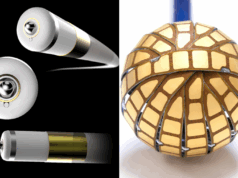
By Helmut U Klein
Even with sophisticated algorithms, we still face 5–10% inappropriate ICD therapy delivery with both, antitachycardia pacing (ATP) and shocks. What is the reason for this dilemma? With our enthusiasm of being able to deliver ramp or burst pacing to terminate stable ventricular tachycardia, we neglected the fact that many tachycardia episodes do not need to be terminated within seconds after onset of the arrhythmia because they may terminate spontaneously. We forgot that besides inappropriately detected arrhythmias, unnecessary ICD intervention occurs as well.
Today, all ICD manufacturers provide highly sophisticated ICD programming features, consisting of a complex detection hierarchy and arrhythmia adjusted ATP or shock delivery.
The goals of ICD programming are simple to define. 1) Therapy delivery has to be lifesaving but must not be harmful. 2) Inappropriate ICD intervention as well as unnecessary therapy needs to be avoided. 3) Device specific algorithms have to be appropriately applied; not rarely, there is a tradeoff between various discriminator algorithms. 4) Besides general rules of programming, individualised, ie. patient adapted programming is mandatory. 5) Primary- or secondary prevention ICD indication may require different programming.
Discriminating algorithms such as sudden onset, stability, the relationship between atrial- and ventricular electrograms as well as morphology comparisons are valid discriminators in almost all devices. We learnt that “time-out settings” and rate smoothing might not be advantageous in specific tachyarrhythmic events. Discriminators should remain “active” during redetection of an arrhythmic event. The benefit of having “near field”, “far field” and atrial electrograms is obvious, although the overall benefit of using dual chamber devices for better arrhythmia discrimination is still a matter of debate.
Dual zone programming for ICD intervention seems to be superior to single zone programming. At least, one attempt of ATP should precede shock delivery, even with higher ventricular tachycardia (VT) rates up to 250bpm; burst pacing seems to be more successful than ramp pacing, at least for primary prevention ICD indication. The incidence of ATP induced VT acceleration is less than 5%.
We still discuss the most appropriate shock energy for the first shock. Lower shock energy has the advantage of shorter charge time, prolonged battery life and less myocardial damage. In times of less defibrillation testing, programming high shock energy already for the first shock seems to be preferable.
Discriminator algorithms are difficult to improve, ATP is highly effective (85%) and high energy shock delivery reliably terminates VT/ventricular fibrillation (VF) episodes. However, inappropriate ICD intervention remains a drawback of ICD therapy; therefore, we have to ask if the detection algorithms need to be improved or do we have a wrong understanding of necessary ICD intervention? Results of the PREPARE study have demonstrated already that programming a monitor zone without ICD intervention for slower VT episodes is important to avoid unnecessary ATP or shock delivery, and our fear of haemodynamic instability of a VT with non-treatment is not justified.
A complete change of ICD programming has been introduced with the results of MADIT-RIT. Monitoring only of VT rates up to 200bpm without ICD intervention is favourable compared to early intervention at rates between 170–200bpm. Delaying ICD intervention for slower VT rates (≤200bpm) for one minute, and for VT rates between 200–250bpm for 12sec, significantly reduced inappropriate ICD interventions when compared with the “conventional” programming arm of the study. Both, inappropriate ATP- and shock delivery were significantly less frequent with these two new modalities of programming. The fact that also appropriate ATP occurred less often, demonstrates that many VT episodes terminated spontaneously and did not need ICD intervention. Therefore, non-treatment of slower VT rates and delayed ICD intervention will help reducing inappropriate and unnecessary ICD therapy.
Another step forward to less appropriate and inappropriate ICD intervention was presented recently by the ADVANCE III trial. Programming a longer detection interval (30 out of 40 intervals to detect) and providing the possibility of ATP during charging reduced the number of total ICD interventions and of inappropriate ICD shock therapy, in both primary- and secondary prevention ICD indication. Further progress of better ICD programming was reported with the PAINFREE-SST study, using an improved detection algorithm with additional wavelet morphology analysis, T-wave discrimination, improved non-sustained VT termination recognition and the possibility of lead integrity or noise assessment.
In summary, ICD programming needs reliable arrhythmia detection algorithms and prediction of a potentially dangerous arrhythmia event. With the results of MADIT-RIT and ADVANCE III, we have to realise that there is a paradigm shift of ICD programming to less fast and less aggressive arrhythmia termination using prolonged detection, delayed intervention and no therapy delivery for slower and stable VT events, allowing them to terminate spontaneously.
References:
- Mansour F, Khairy. Programming ICDs in the modern era beyond out-of-the box settings. Pacing Clin Electrophysiol. 2011;34:506-520
- Wilkoff BL, Williamson BD, Stern RS, et al. Strategic programming of detection and therapy parameters in implantable cardioverter-defibrillators reduces shocks in primary prevention patients; results from the PREPARE (Primary Prevention Parameters Evaluation) study. J Am Coll Cardiol 2008; 52:541-550
- Moss AJ, Schuger C, Beck CA et al. Reduction in inappropriate therapy and mortality through ICD programming (MADIT-RIT). N Engl J Med 2012;367:2275-2283
- Gasparini M, Proclemer A, Klersy C, et al. Effect of long-detection interval vs standard-detection interval for implantable cardioverter-defibrillators on antitachycardia pacing and shock delivery. JAMA 2013; 309:1903-1911
Helmut U Klein is adjunct professor of Medicine, University of Rochester Medical Center, Heart Research Follow-up Program, Rochester, USA









